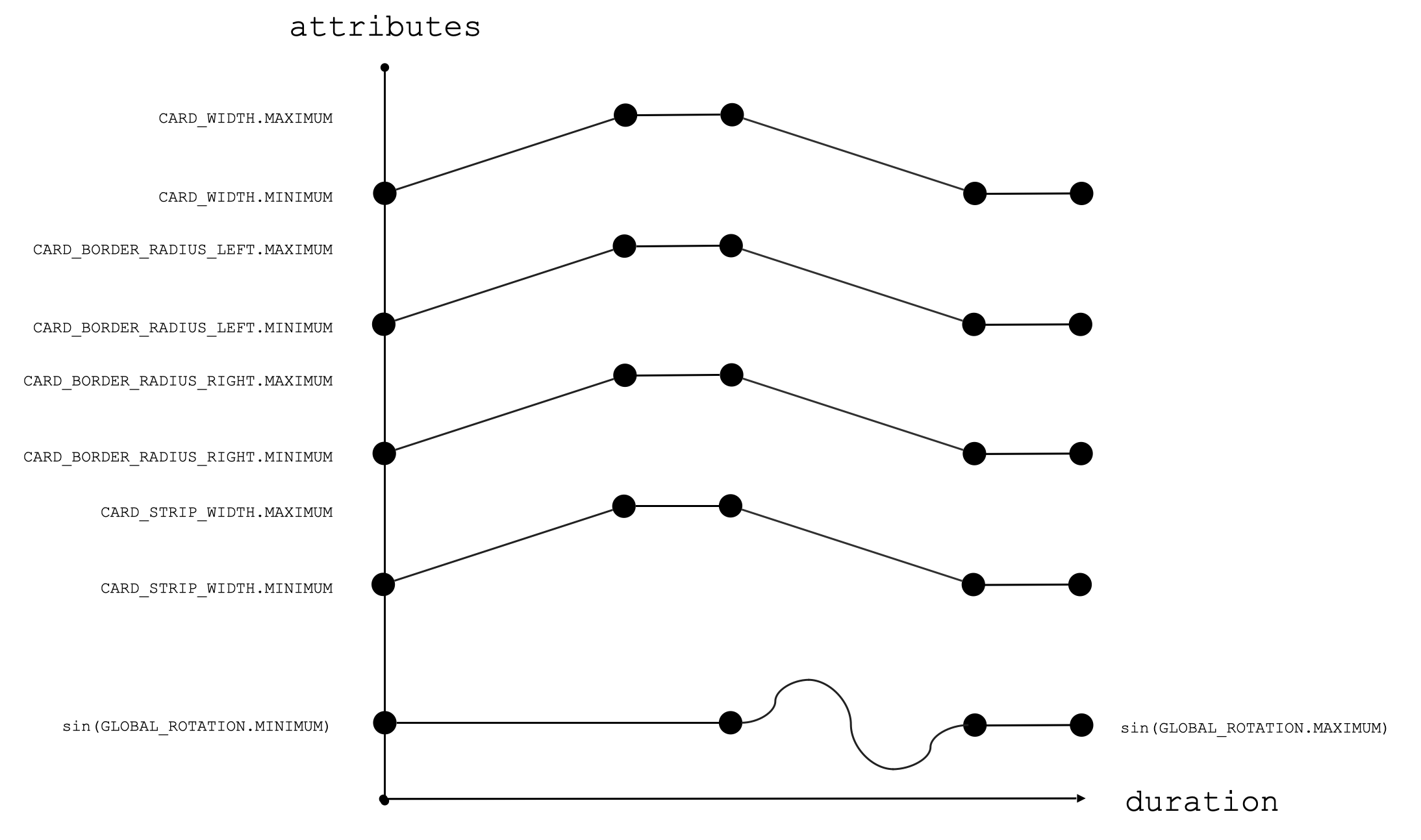C o m u n
a neobank promoting social mobility for immigrants and their families
UI Animations
-
Define key frame transitions (or state transitions) for relevant style properties
-
Define key frame transitions (or state transitions) for relevant style properties
-
Trigger animation sequences
-
If needed/optionally, interpolate values to to fit style property format
-
Assign the animated values to the style properties
[ 0 0 1] Define values
Define initial values for relevant style properties
const rotation = useRef(new Animated.Value(0)).current;
const cardWidth = useRef(new Animated.Value(CARD_WIDTH.MINIMUM)).current;
const cardLeftBorderRadius = useRef(new Animated.Value(CARD_BORDER_RADIUS_LEFT.MAXIMUM)).current;
const cardRightBorderRadius = useRef(new Animated.Value(CARD_BORDER_RADIUS_RIGHT.MINIMUM)).current;
const stripWidth = useRef(new Animated.Value(CARD_STRIP_WIDTH.MINIMUM)).current;[ 0 0 2] Define transitions
Define key frame transitions (or transition states) for relevant style properties. These transition states are created by Animated.timing
const widthIncrease = useMemo(() => {
cardWidth.setValue(CARD_WIDTH.MINIMUM);
return Animated.timing(cardWidth, {
toValue: CARD_WIDTH.MAXIMUM,
duration: PERIOD,
easing: Easing.ease,
useNativeDriver: false,
});
}, [cardWidth]);animated.timing
Sets up the transition between the initial and final value or state (or, keyframes) over an interval of time.
toValue: determines the final value, state, or keyframe
duration: determines the transition interval of time in milliseconds
easing: determines the shape of this patheasing: Easing.linear
Animated.delay
keeps a value, state, or keyframe constant for a given duration of time in milliseconds.
Animated.Sequence
takes in a list of the behaviors of values over time – i.e. changes in values over time (Animated.timing) and constants values over time (Animated.delay) that occur one after another (sequentially). The goal is to create a continuous path.
Note: can be nested inside an Animated.parallel list
Animated.Parallel
takes in a list of the behaviors of values over time – i.e. changes in values over time (Animated.timing) and constants values over time (Animated.delay) that occur at the same time (in parallel).
Note: can be nested inside an Animated.sequence list
[ 0 0 3] Sequence
Trigger animation sequences
Animated.loop(
Animated.sequence([
Animated.parallel([
widthIncrease,
leftBorderRadiusIncrease,
rightBorderRadiusIncrease,
stripWidthIncrease,
]),
Animated.delay(DELAY),
Animated.parallel([
rotate,
widthDecrease,
leftBorderRadiusDecrease,
rightBorderRadiusDecrease,
stripWidthDecrease,
]),
Animated.delay(DELAY),
])
).start();[ 0 0 4] interpolation
If needed/optionally, interpolate values to to fit style property format
const interpolateRotation = useMemo(
() =>
rotation.interpolate({
inputRange: [0, 1],
outputRange: [GLOBAL_ROTATION.MINIMUM, GLOBAL_ROTATION.MAXIMUM],
}),
[rotation]
);Example: interpolate [0, 1] to [“0deg”, “360deg”] for rotation style property
[ 0 0 5] Assign animations
Assign the animated values to the style properties
const globalRotation = useMemo(
() => ({
transform: [{ rotate: interpolateRotation }],
}),[interpolateRotation]);
const animateCard = useMemo(
() => ({
borderTopLeftRadius: cardLeftBorderRadius,
borderBottomLeftRadius: cardLeftBorderRadius,
borderTopRightRadius: cardRightBorderRadius,
borderBottomRightRadius: cardRightBorderRadius,
width: cardWidth,
}),[cardLeftBorderRadius, cardRightBorderRadius, cardWidth]);
const animatedStrip = useMemo(
() => ({
width: stripWidth,
}),[stripWidth]); <View style={styles.animationContainer}>
<Animated.View style={[styles.cardContainer, globalRotation]}>
<Animated.View style={[styles.stripLight, animatedStrip]} />
<Animated.View style={[styles.card, animateCard]} />
</Animated.View>
</View>




